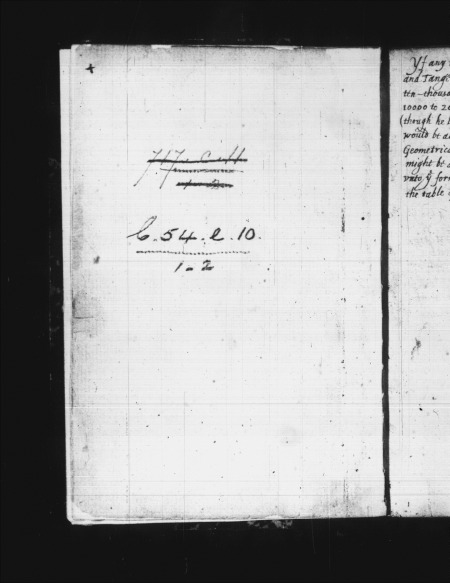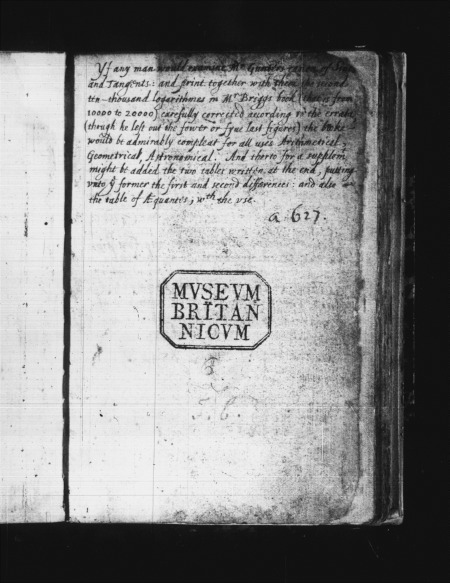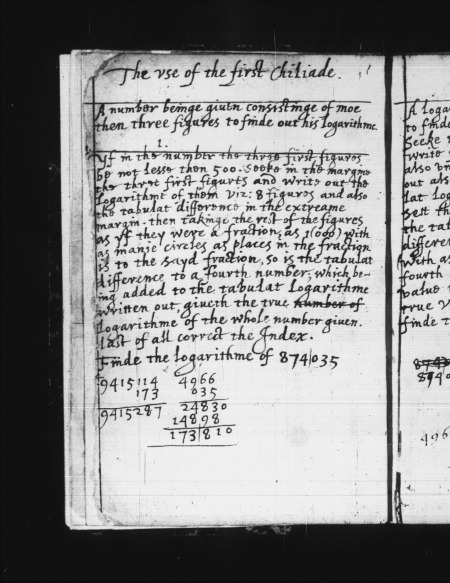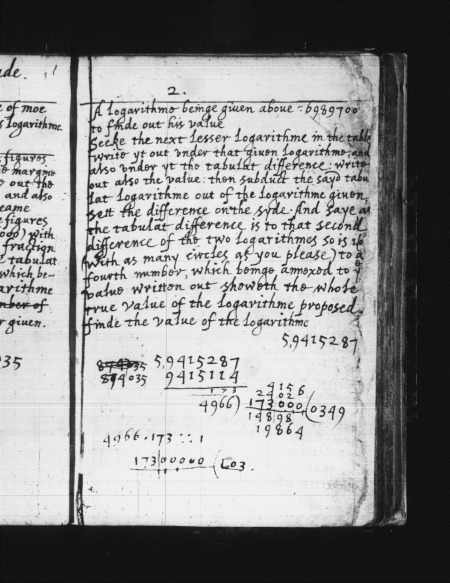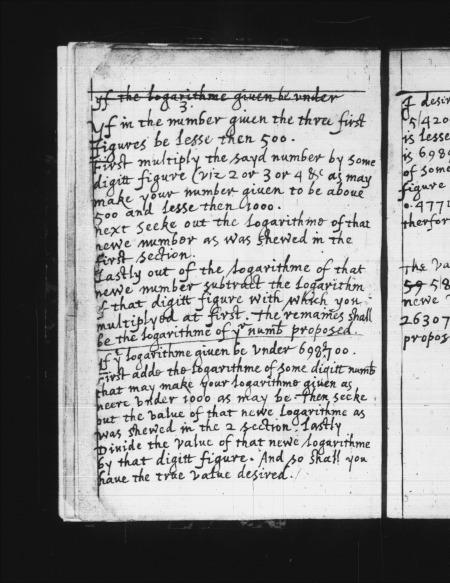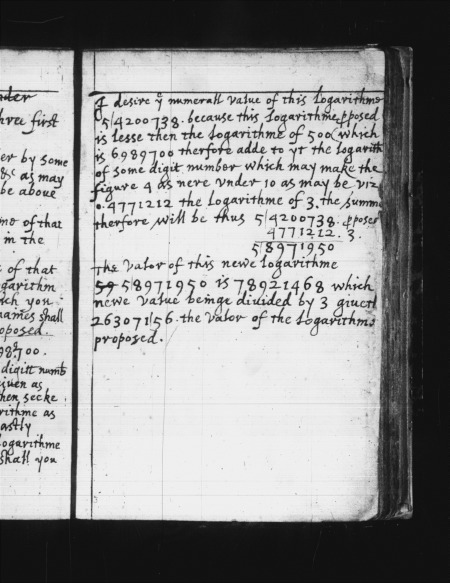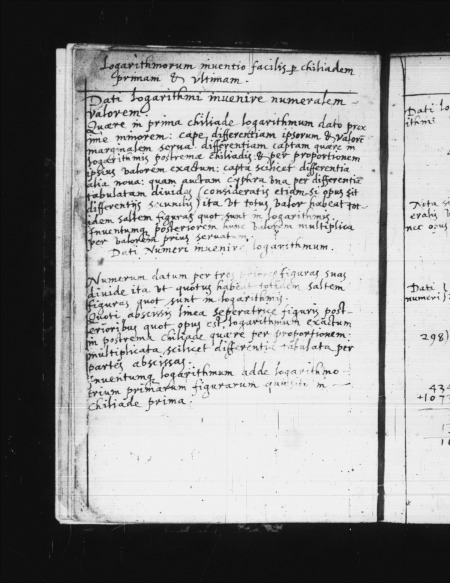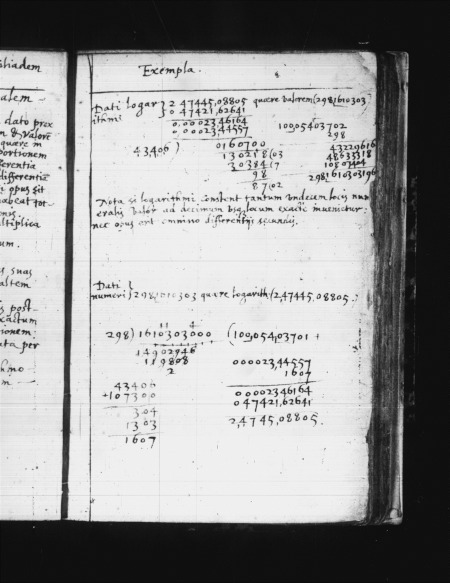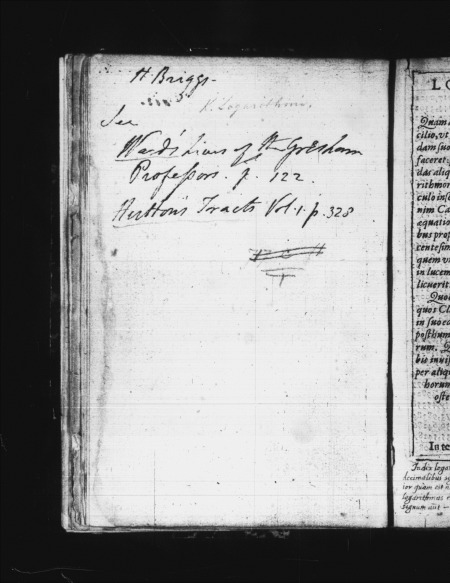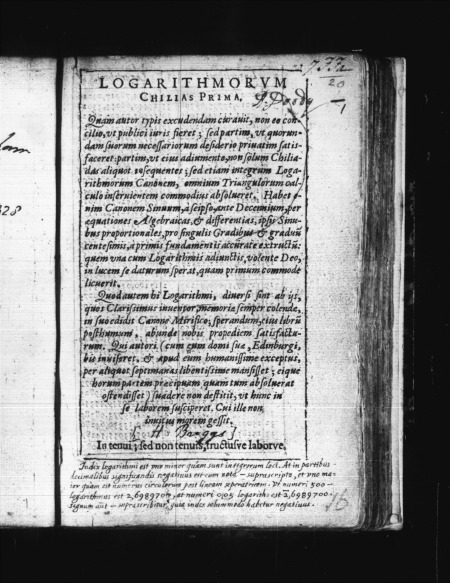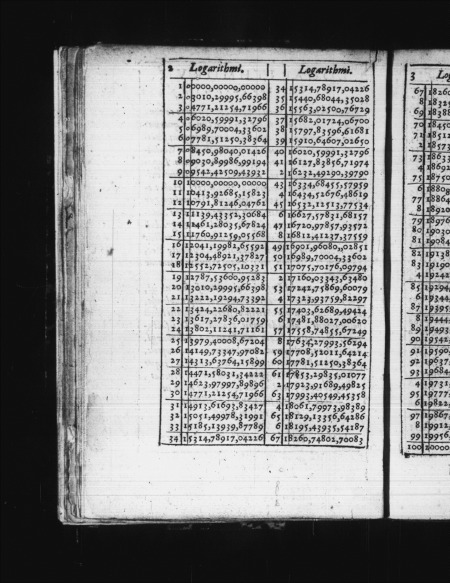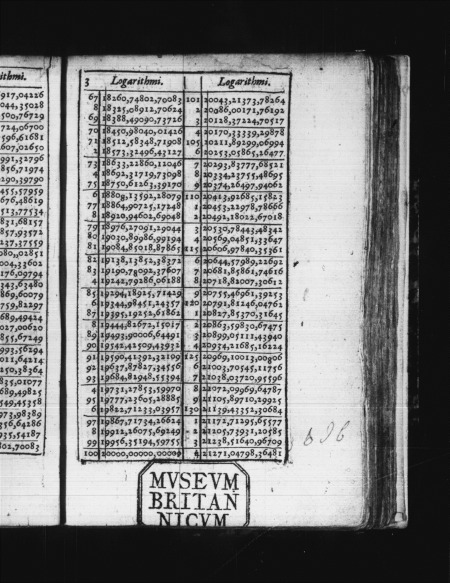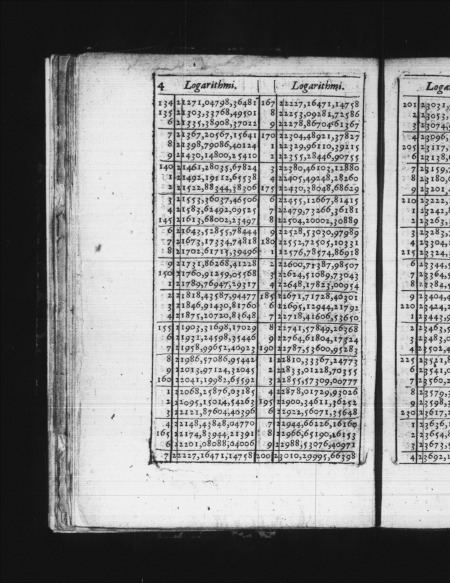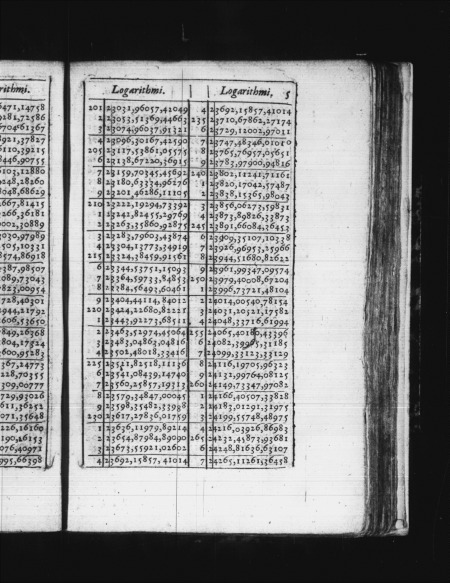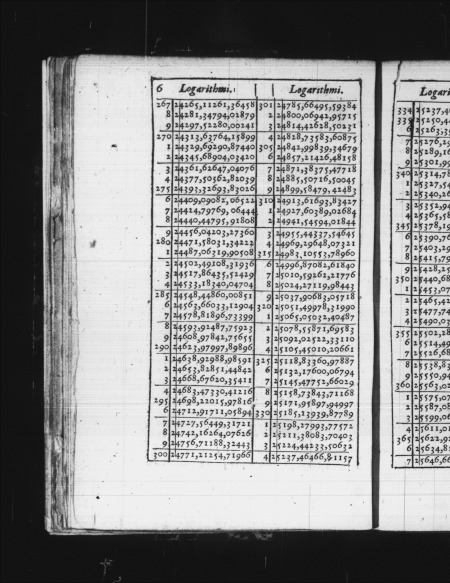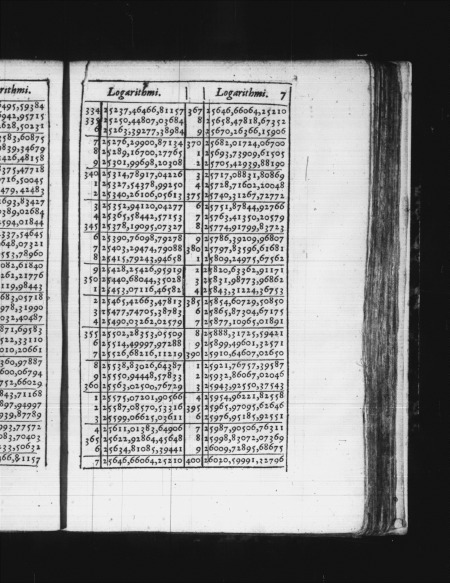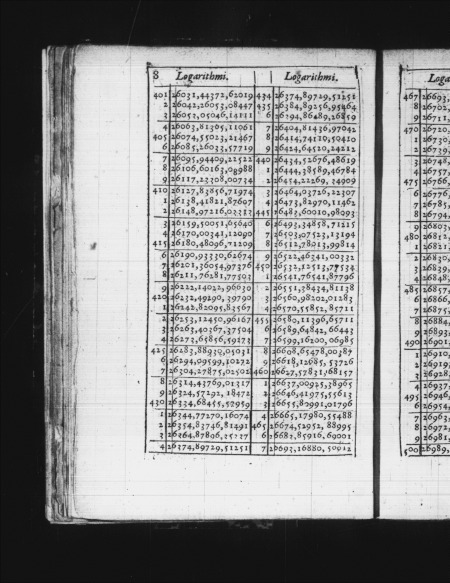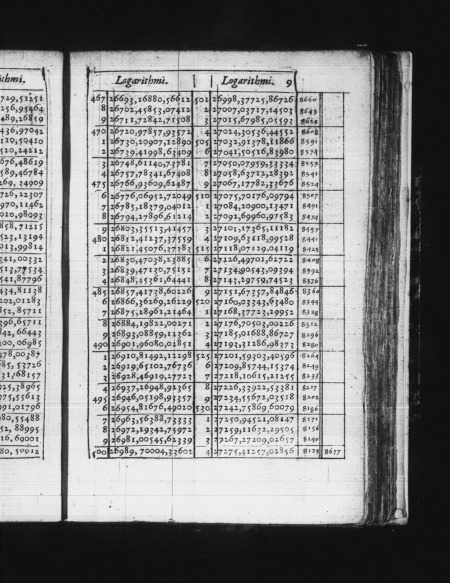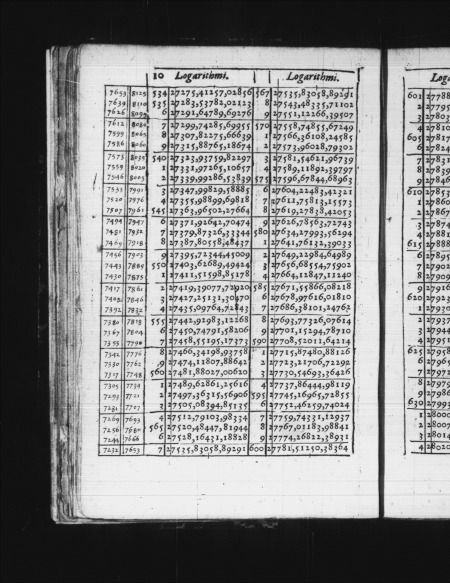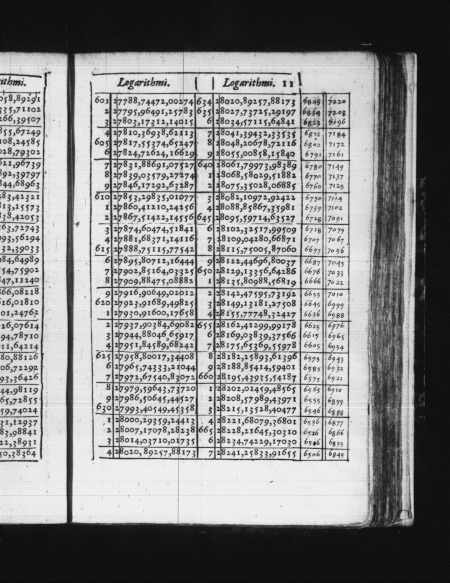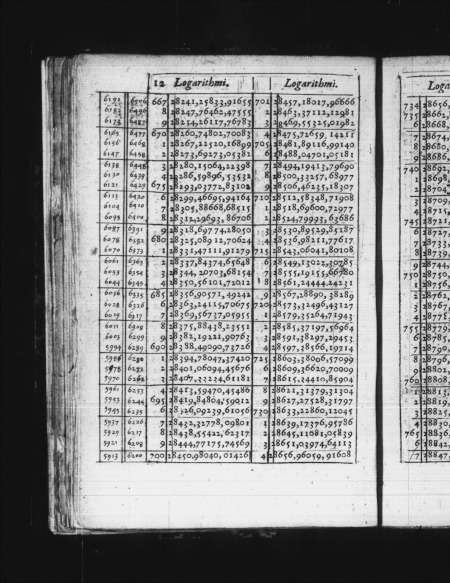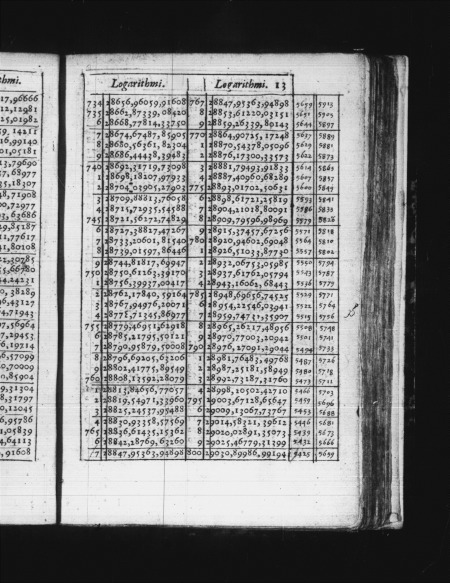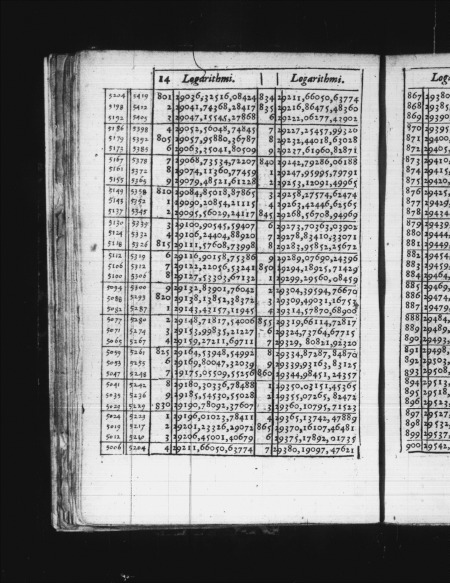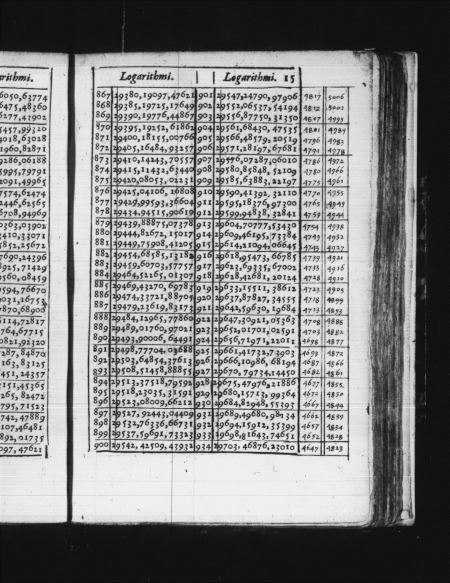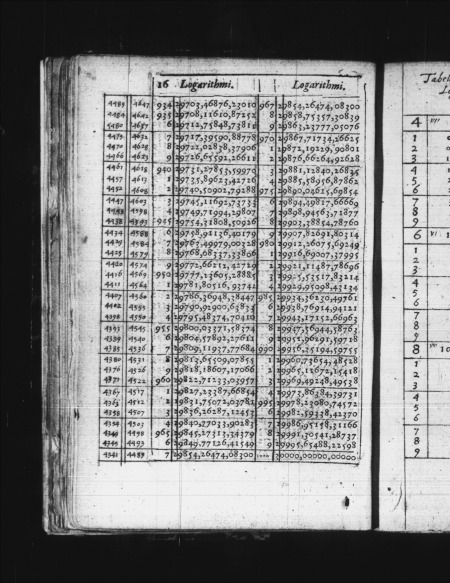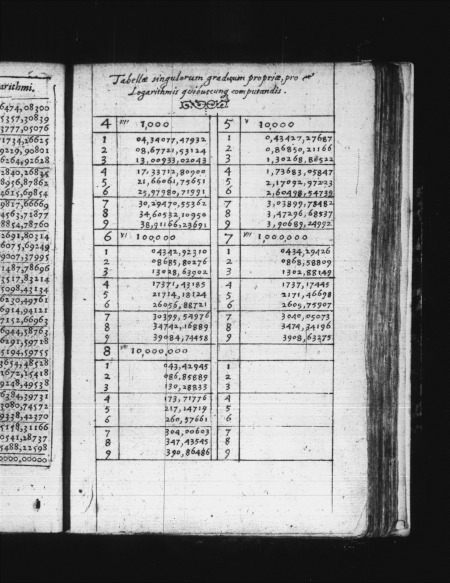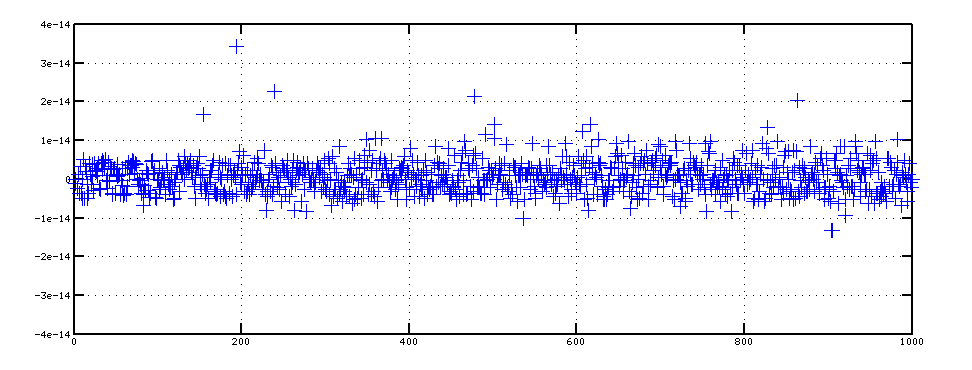Here is some analysis of Briggs' first logarithm table of 1617, Logarithmorum Chilias Prima.
The table is available on microfilm as part of the Early English Books series from UMI/ProQuest. The on-line service, Early English Books Online (EEBO), also makes the work available, but the scans are of poor quality and they are not redistributable. Independent scans of the microfilm, however, apparently have no copyright issues, at least in the USA: the "slavish copy" rule applies, and the underlying work is of course out of copyright.
I had originally planned to use a special-purpose OCR algorithm to recover the table entries. That still seems to be the best bet for relatively modern tables such as Sang's or Thompson's. The printing in Logarithmorum, however, is sufficiently geometrically nonuniform that OCR would probably not be more robust than simply typing in the numbers by hand. That's what I ended up doing; fortunately this small table has only 14000 digits. Here is the list of table logarithms:
logarithmorum-chilias-prima-entries.txt
It's now a simple matter to compare these values to those computed by software. Here is a plot of the differences:
The plot shows the expected quantization error uniformly distributed within +- 0.5e-14, owing to the rounding to 14 decimal places in Briggs' table. There are several larger errors at 154, 194, 239, 478, and 863; the largest of these is at 194 with an amplitude of about 3e-14, that is, 3 units in the last place. Also noticeable is a gradual increase in numerical noise in the second half of the table. Presumably this is because these logarithms are derived quantities from previous results. The errors at 239 and 478 are certainly related, since 478 is twice 239 and was doubtless obtained by adding log(2) to the 239 entry. For some reason most of the errors larger than 1e-14 are positive (table value greater than true value).
Finally, here are the microfilm scans. Click on any thumbnail to see a larger, higher-quality version (2544 x 3296 pixels, approx. 442 dpi).
In this instance of the document there are eight pages of handwritten tutorial information preceding the table proper and one handwritten page of auxiliary tables after the printed table. I don't know the history of these additions. Also the core 16-page printed table has been modified with lines dividing the characteristic from the mantissa, low-precision first differences in the margins starting from 500, and a few other things.
It would be interesting to compare this copy (from the British Library / British Museum) with the other extant copies. I've seen this copy at the British Library, and were their scanning policies more liberal, one can imagine making available a very high quality color scan for everyone to view and analyze.
